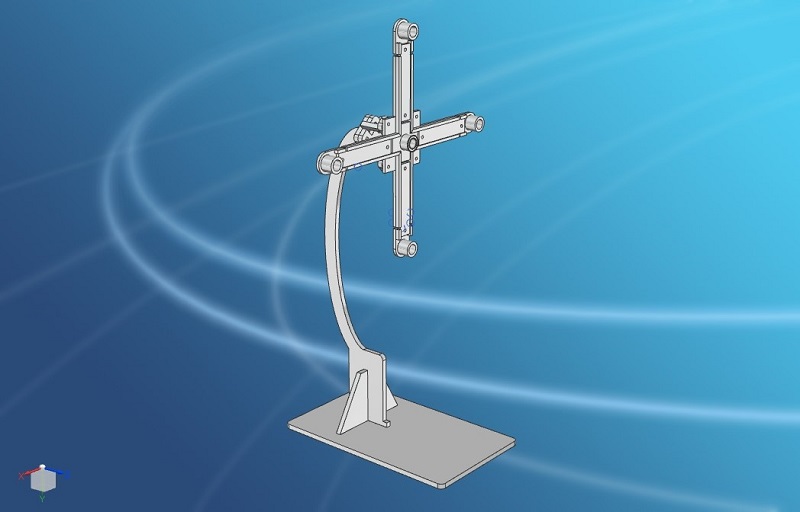What can sound do? For scientists, not only can it be a whisper to express feelings, but it is also a sword full of strength and power. Sound can reverse time, restoring a scene at a certain time through audio and video scene analysis; sound can be used for quality inspection, searching among thousands of bottles for the cracked one through sound wave test; sound can recover one’s youthful vigor, making the chaotic voice of elderly people clear again through impaired speech repair technology.

Multi-functional sound source positioning bracket
With the development of big data analysis, neural networks and other artificial intelligence technologies, the intelligent analysis of audio and video has achieved significant breakthroughs. A group of young scholars from Tianjin University are committed to research in this field. Part of their core research achievements are among the leading universities in our country, and some have even become national standards.

Sound source positioning program
“Intelligent media is a branch of the artificial intelligence system, which combines software and hardware in artificial intelligence on the basis of digital multimedia to realize the efficient and intelligent acquisition of media information for users. The core of intelligent media technology is to process, analyze and comprehend audio and video information, thus accomplishing intelligent processing”, says Zhang Tao, associate professor of School of Electrical and Information Engineering of Tianjin University (TJU). The TJU -TIDSP Joint Laboratory he leads, has made progress in the field of two intelligent media research fields: intelligent audio and intelligent video.

A PhD candidate is conducting a test in the laboratory
"The laboratory focuses on the analysis of audio scenes and repair of damaged speech signals in two regards. The applications of audio scene analysis are promising, which can make the equipment perceive the environment. For example, it can improve the navigation of robots, reconstruct natural or artificial scenes, improve noise reduction effects, obtain military intelligence, and rebuild crime scenes in criminal investigations”, said Zhang Tao. “Of course, there are many areas of applications which we can use in daily life. For example, monitoring the family environment for home automation and monitoring of systems such as elevators, parking lots, traffic lights and etc. What's more, in the aspect of repairing damaged speech signals, researchers can repair damaged vocal cords caused by pathological changes and ageing." Zhang Tao continued.
Giving sound intelligence and feeling, the research develops a variety of applications on this basis to improve people's lives.
The laboratory study proposed a new interception signal window function, for which they applied for a national patent and it was adopted as a national technical standard.
By: School of Electrical and Information Engineering
Editors: Qin Mian and Christopher Peter Clarke






